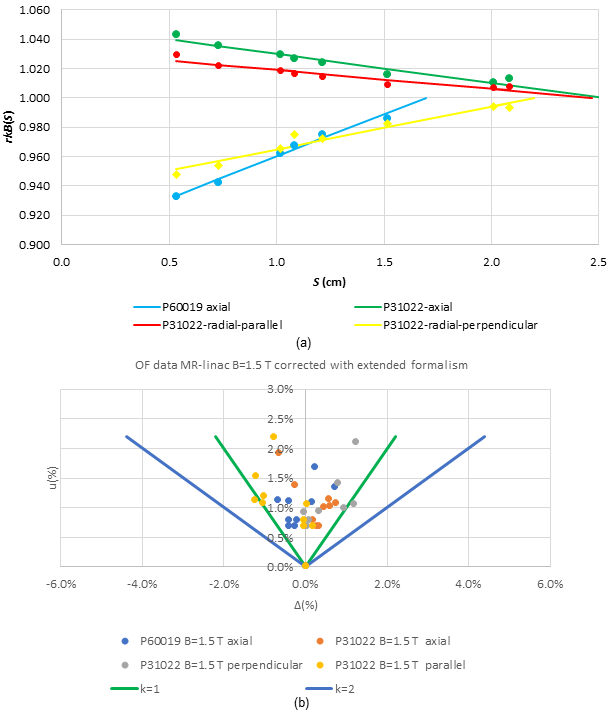Extending TRS-483 for small field dosimetry in MR-linacs
Jacco de Pooter,
The Netherlands
OC-0113
Abstract
Extending TRS-483 for small field dosimetry in MR-linacs
Authors: Jacco de Pooter1, Leon de Prez1, Simon Woodings2
1VSL, Ionizing Radiation, Delft, The Netherlands; 2UMCU, Radiotherapy, Utrecht, The Netherlands
Show Affiliations
Hide Affiliations
Purpose or Objective
IAEA TRS-483 provides a method for small field dosimetry in conventional linac beams. Treatments based on MR-linacs require dosimetry in presence of magnetic fields (B), which has a big impact on detector calibration coefficients depending on orientation/magnitude of B not accounted for in TRS-483. This study investigates a new method to extend TRS-483 for small field dosimetry in MR-linacs.
Material and Methods
The TRS-483 formalism determines field output factors (OF(S)) from the product of ROF (ratio of readings of field with size S and the reference field (S_msr =10 cm)) and the output correction factor.
The extended formalism for MR-linacs in this study calculates the output correction factor in presence of B, (2nd term rhs of equation) by multiplication of (existing) output correction factors for B=0 with rkB(S). To determine rkB(S) data for this extended formalism, k_B factors as a function of S for two detectors with different characteristics (PTW 60019) and PTW 31022) were calculated with Monte Carlo techniques (PENELOPE), using phase space files of square fields (S=0.5–2.0 cm and S_msr) of an Elekta Unity™ MR-linac (B=1.5 T). For PTW 60019, the axial orientation was applied and for PTW 31022 three orientations (axial, radial (perpendicular and parallel to the B-field)). For each detector/orientation a linear function was fitted to the rkB(S), S data set. For the same set of detector/orientation, ROF data measured on the central beam axis of square fields (S=0.5–2.0 cm) in a clinical Elekta Unity™ MR-linac was corrected according to the extended formalism, yielding OF(S) data. The output correction factor in presence of B was calculated from output correction factors for B=0 from [1] and rkB(S) (Fig.(a)). S of the measured fields was determined by cross profile measurements.
Results

rkB(S) (Fig. (a)) varies from 0.93 to 1.04 for S=0.5 cm and strongly depends on detector type and orientation. Uncertainties on OF were estimated by accounting for the statistical uncertainties of the Monte Carlo data, fitting and experimental uncertainties. Fig. (b) demonstrates that all differences (Δ) of OF(S) from their average (per field ) are consistent with their associated uncertainties (< 2.2 %) for a coverage factor k=2 and for most data points on the level k=1. Comparing the OF(S) calculated using the TRS-483 formalism (i.e. ignoring rkB(S)) yields Δ values of -5.4% to +5.2% (min-max).
Conclusion
A new method to extend TRS-483 for small field dosimetry in MR-linacs, based on existing output correction factor data sets for B=0 T, was developed and validated. Output correction factors in presence of magnetic field strongly depend on detector type and orientation. Despite these differences and in contrast to the existing TRS-483 formalism, the proposed method and calculated output correction factor data yields consistent OF(S) results within their uncertainty (< 2.2%), which is on the same level as reported in TRS-483 for conventional linacs.
[1] Casar, B, et al, Med. Phys. 2020